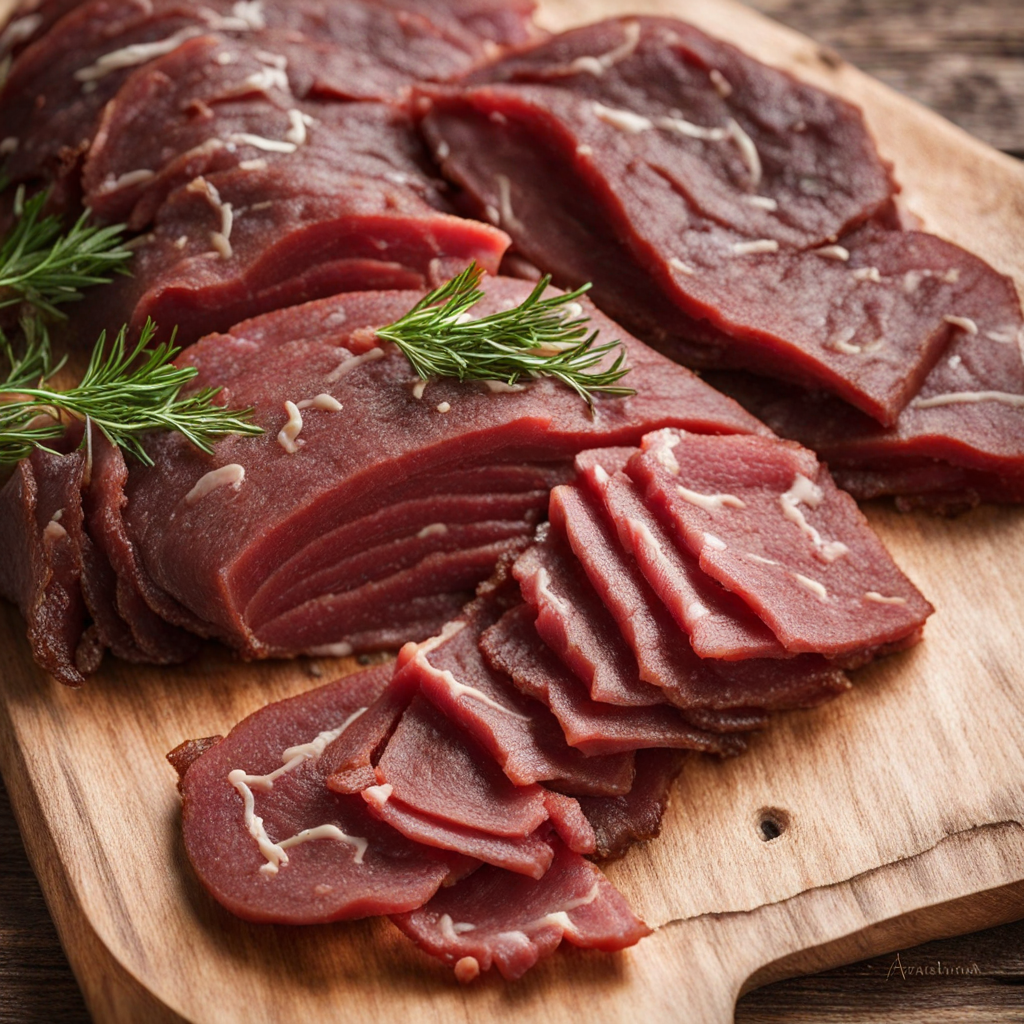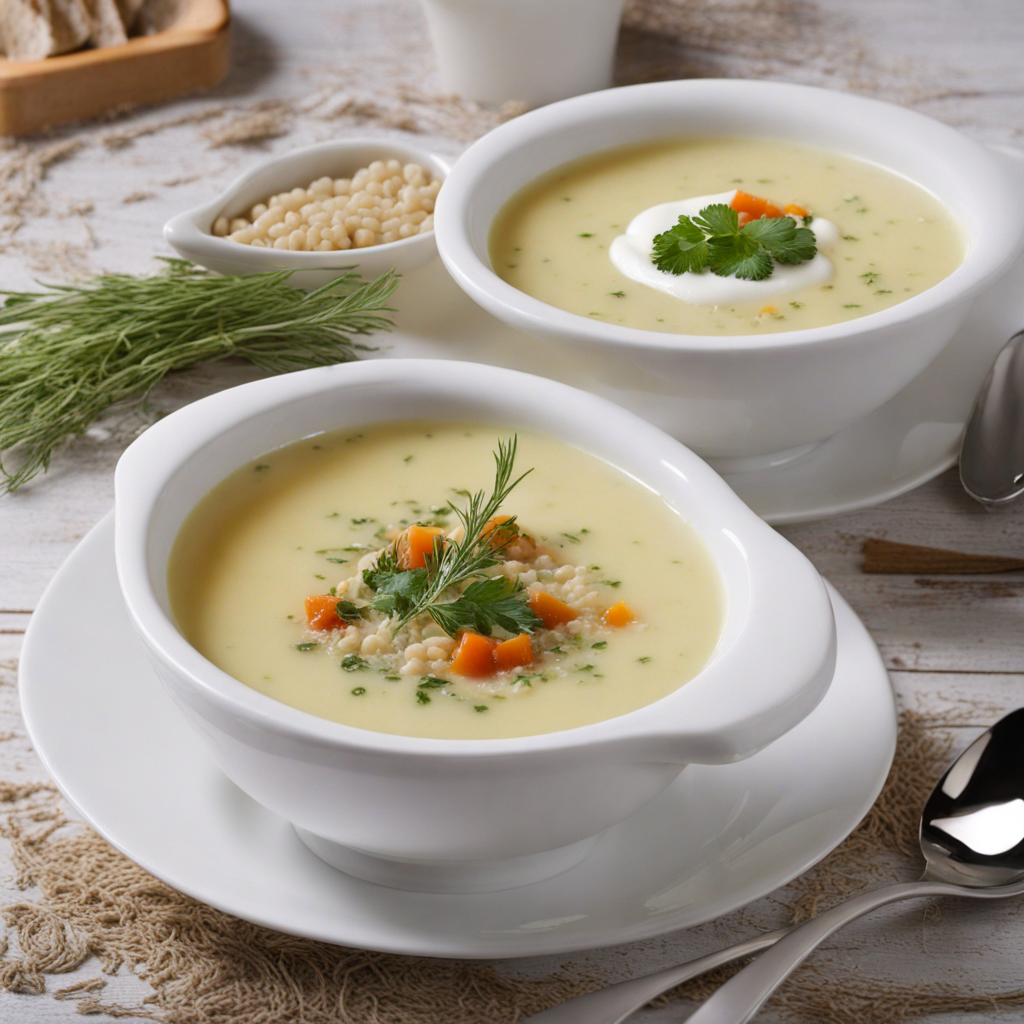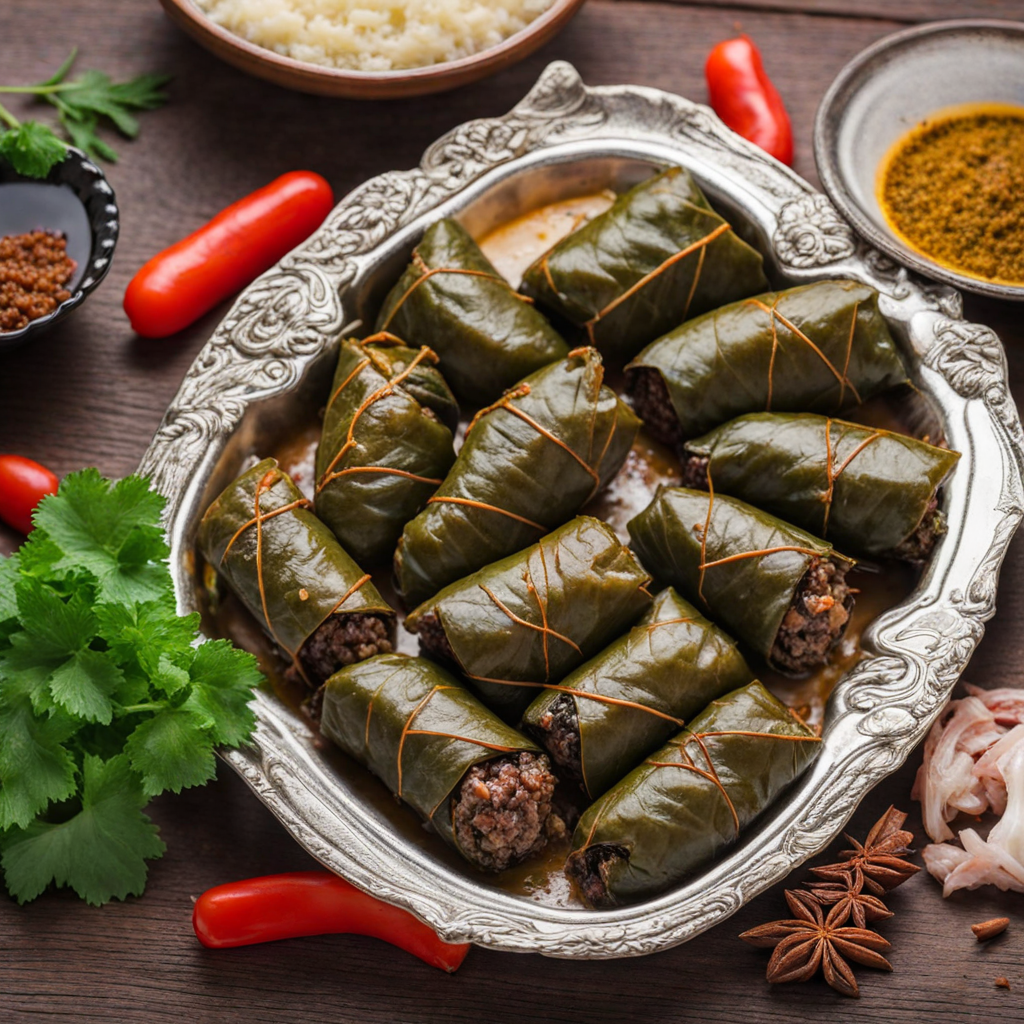Basturma
Basturma is a traditional Armenian cured meat that captivates the senses with its rich flavor and unique preparation methods. This delicacy is typically made from beef, though variations can include lamb or pork. The meat is first salted and dried to remove moisture, which intensifies its flavor and ensures preservation. The drying process is crucial, as it allows the meat to develop a firm texture while enhancing its natural umami notes. Once dried, the meat is coated in a blend of crushed garlic and fenugreek, and sometimes flavored with spices like black pepper and paprika, creating a complex and aromatic crust that is both savory and slightly sweet. As you take your first bite of basturma, you’ll notice the delightful contrast between the tender, succulent interior and the robust, spiced exterior. The garlic and fenugreek add depth to the already intense beef flavor, while the spices provide a subtle warmth that lingers on the palate. Each slice reveals a gorgeous marbling of fat that melts in your mouth, enhancing the overall richness of the dish. It is often enjoyed thinly sliced, making it a perfect addition to charcuterie boards, salads, or served as an appetizer with fresh bread and cheese. Basturma is not just a dish; it embodies the essence of Armenian culinary heritage. It is often shared during festive gatherings, symbolizing hospitality and tradition. Pairing basturma with a glass of Armenian wine or a refreshing yogurt drink elevates the experience, allowing you to savor the full range of flavors. For those adventurous eaters seeking to explore new tastes, basturma offers a unique culinary journey that highlights the art of meat preservation and the rich tapestry of Armenian flavors.
How It Became This Dish
Origins of Basterma Basterma, a traditional Armenian cured meat, traces its roots back to the ancient cultures of the Near East, where preservation techniques were vital for survival. The word "basterma" derives from the Arabic "bastirma," meaning "to press," which refers to the method of preparing the meat. This method likely began as a necessity for preserving food in the arid climates of the region, where refrigeration was nonexistent. The earliest records of cured meats in Armenia date back to the Kingdom of Urartu, around the 9th century BC. This civilization cultivated advanced agricultural practices and animal husbandry, allowing for the production of high-quality meats. As trade routes developed, particularly along the Silk Road, the exchange of culinary techniques and ingredients flourished, allowing methods like basterma to spread across different cultures, including the Greeks, Romans, and various Middle Eastern societies. \n\n Cultural Significance Basterma holds a special place in Armenian cuisine and culture. It is not merely a food item; it symbolizes hospitality and the importance of sharing meals with loved ones. Traditionally, it is served during festive occasions, family gatherings, and religious celebrations, reinforcing the communal aspect of Armenian dining. Basterma is often accompanied by lavash, a traditional Armenian flatbread, and various side dishes, showcasing its role in enhancing communal meals. In Armenian households, the preparation of basterma is often a family affair. The process can take several weeks, involving multiple steps, including salting, pressing, and drying the meat. This meticulous preparation imbues the dish with a sense of pride and tradition, passed down through generations. Moreover, it reflects the agricultural heritage of Armenia, where livestock farming has been a cornerstone of rural life. \n\n Preparation and Ingredients The preparation of basterma involves specific cuts of meat, typically beef, which is salted and coated with a mixture of crushed garlic, fenugreek, and other spices. This spice blend not only enhances the flavor but also acts as a preservative. The meat is then pressed to expel moisture and is subsequently air-dried in a controlled environment. The careful balance of salt, spices, and drying creates a unique flavor profile, characterized by a rich, savory taste with a hint of spiciness. The use of fenugreek is particularly noteworthy. This spice, integral to the dish, has a long history in Armenian cuisine and is cherished for its health benefits. Its inclusion in basterma not only adds flavor but also connects the dish to the broader spectrum of Armenian herbal medicine and culinary traditions. \n\n Evolution Through Time Over the centuries, basterma has evolved as various cultural influences have shaped Armenian culinary practices. During the Ottoman Empire, for instance, the dish gained popularity beyond Armenia, spreading through the Levant and becoming a staple in various Middle Eastern cuisines. This cross-cultural exchange led to slight variations in preparation methods and spices used, showcasing the adaptability of this beloved dish. In contemporary Armenia, basterma remains a revered delicacy. While traditional methods are still practiced, modernization has introduced new techniques and conveniences, allowing for mass production and wider availability. Many artisanal producers now craft basterma, celebrating traditional methods while also innovating to meet modern tastes. This balance between tradition and innovation ensures that basterma continues to be a significant part of the Armenian culinary landscape. \n\n Basterma in the Diaspora As Armenians migrated around the world, particularly after the Armenian Genocide in the early 20th century, they brought their culinary traditions, including basterma, with them. In countries such as Lebanon, the United States, and France, Armenian communities have established their own interpretations of basterma, adapting to local ingredients and palates while maintaining the essence of the dish. In these diaspora communities, basterma serves as a culinary anchor, connecting Armenians to their heritage and to each other. It is often featured at cultural events, such as Armenian festivals and church gatherings, where traditional foods reaffirm identity and community ties. The diaspora has also played a critical role in the globalization of Armenian cuisine, introducing dishes like basterma to a broader audience. \n\n Modern Culinary Scene Today, basterma is experiencing a renaissance, not only in Armenia but also in international culinary circles. Chefs and food enthusiasts are increasingly drawn to traditional cuisines, and Armenian food is no exception. The unique preparation and robust flavors of basterma have caught the attention of gourmet restaurants and food bloggers alike, leading to a resurgence in interest and appreciation for this traditional dish. In recent years, food festivals and culinary events dedicated to Armenian cuisine have also contributed to the popularity of basterma. Workshops showcasing the art of making basterma attract those eager to learn about this time-honored practice. As awareness grows, so does the demand for authentic Armenian products, creating opportunities for artisans and producers who specialize in traditional foods. \n\n Conclusion Basterma is more than just a cured meat; it is a testament to Armenia's rich culinary heritage and the resilience of its culture. From its ancient origins to its modern adaptations, basterma embodies the spirit of hospitality, tradition, and community. As it continues to evolve and gain recognition globally, this beloved dish remains a cherished part of Armenian identity, bridging the past and present through its flavors. Whether enjoyed at a family gathering or a gourmet restaurant, basterma is a delicious reminder of Armenia's culinary legacy and the stories woven into its rich history.
You may like
Discover local flavors from Armenia







